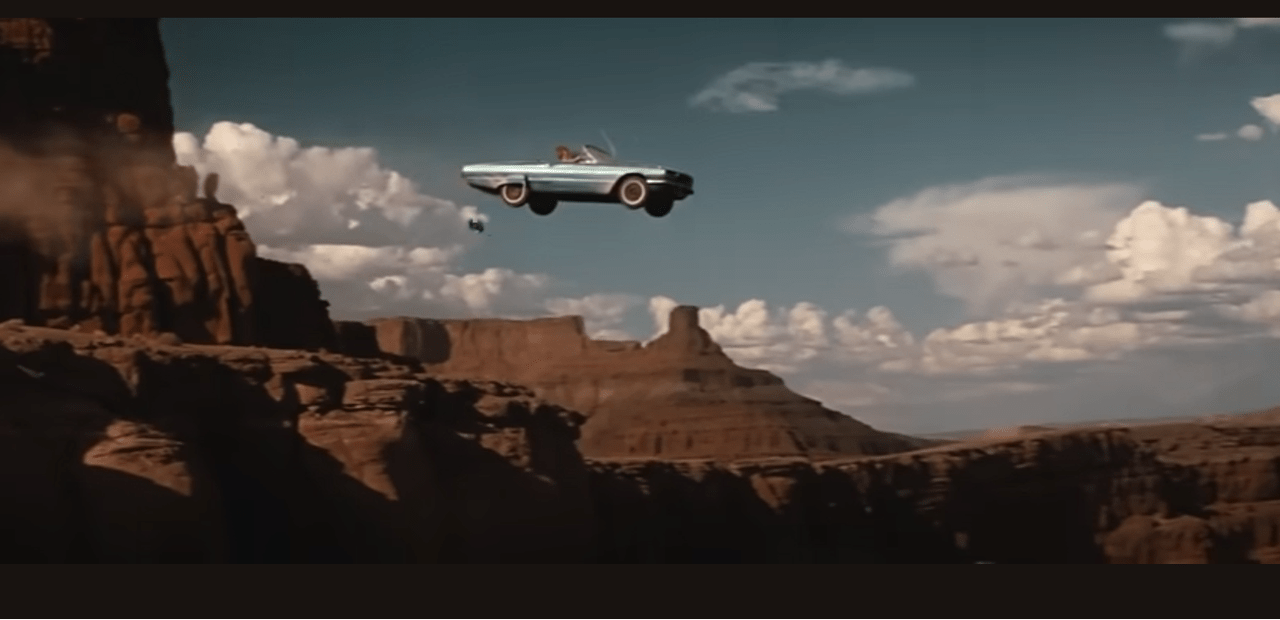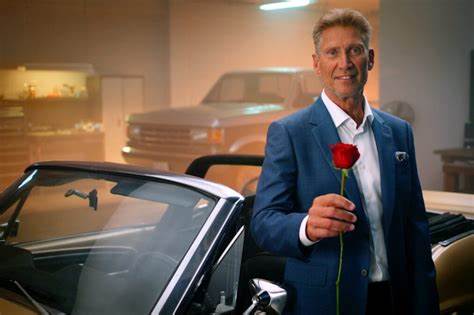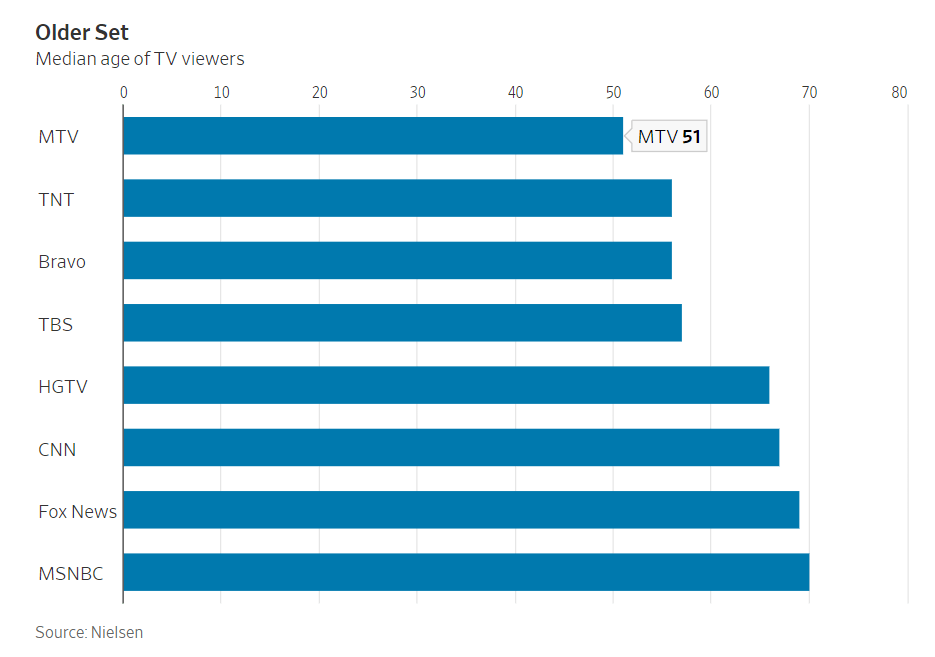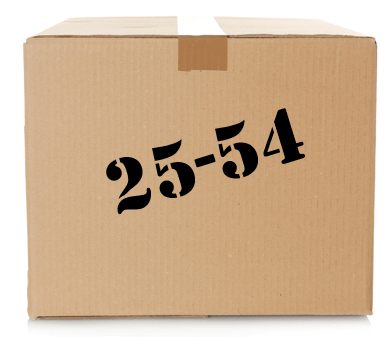
When you’ve signed on as many radio stations as I have, you become very accustomed to appreciating the push and pull of risk and reward. I’ve had the good fortune to be involved with numerous winners, some of which were absolute long shots. And those are the ones you truly enjoy when they succeed.
As a result of our foray with Classic Rock in the ’80s, followed by the Edge format through much of the ’90s, I’ve had the unique thrill of creating new formats and innovating tired ones. I’ve experienced more sales meetings than you can imagine, filled with pessimistic reps sitting there with their arms crossed.
Like Z100’s famous “From worst to first,” getting behind an underdog and watching it defy all the naysayers – and radio is famous for having lots of naysayers – is pure joy. Unfortunately, as much as our industry has historically claimed to always be looking for “the next big thing,” skeptics often outnumber optimists when it comes time to press the trigger.
In the past, launching new radio formats was simply a smart, evolutionary idea. In much the same way the auto industry has always come up with new makes and models of cars and trucks, broadcast radio at least here in the U.S. consistently hatched new variants of old formats or created new concepts altogether. They didn’t always work, of course, but the consistent search for new and different radio was always omnipresent.
But outside of the typical new format launch, when is it time to take a real risk – the kind that can turn out to be a career do-or-die? I’m talking about a serious roll of the dice, because nothing else seems to be working – the moment born out of a combination of desperation but also a sense of adventure?

That’s apparently the point commercial television is reaching, and we radio folk should be paying attention. I don’t watch a whole lot of network prime time – obviously, I’m part of the problem, too – but the signs have been there for a while. A lot of shows have had an AARP-ish sheen to them for a long time, led by old salts from Tom Selleck to Mark Harmon. And then the Golden Bachelor, last year’s moon shot by ABC that ended up coming up roses. Not only did this reality TV drama work for Baby Boomers, younger generations lurked, too, making the show a rare network TV success.
And now there are strong indications the networks have assessed their increasingly precarious situation, and they’re ready to Thelma-and-Louise over the vast demographic cliff – yes, the same vast abyss radio’s been flirting with or well more than a decade.
A recent story in the Wall Street Journal was the clarifier for me. Titled “TV Networks Embrace Their Aging Audience With a New Mantra: Age Doesn’t Matter,” it contains quote after quote from network executives indicating the bleeding has finally gotten to the point where a complete rethink of the givens hasn’t become just a good idea – it’s a necessity.
The sub-headline is every bit as good: “With viewers in their 60s, networks aren’t pretending to have youth appeal; they’re outing the virtues of older audiences.” Sound familiar, radio peeps?
Writers Isabella Simonetti and Joe Flint did the legwork for WSJ, cataloguing one assessment after another that justifies the shift to viewers of a certain age, rather than cater to a younger audience that has simply gotten away from them. They point to an “upfront” from Warner Brothers Discovery that touted the “broad audience” marketers can’t get anywhere else in “a trusted environment,” of course.
And the gnarly question of age was avoided at the event, as networks are gravitating away from the tried-and-true demographic pitch in favor of consumer brand preferences and purchasing patterns and tendencies.
For these traditional bastions of television viewing, marketers are now pitching reach (how novel – the biggest numbers on the page, by the way), and the fact consumers will simply buy the advertised product or service, regardless of their chronological age.
After all, network TV demographics look awfully familiar to what we’ve become accustomed to seeing in radio ratings over the past many years. And without more creative, innovative digital content and the marketing to support it, how likely is that to change?
Consider the median age of network audiences, including a long-in-the-tooth MTV, clocking in at 51 years of age. Even Beavis and Butthead have joined AARP.

As Simonetti and Flint point out, the TV networks have one simple, unified goal:
“Make the most of the…audience they do have – and cushion the financial blow of the industry’s decline.”
Now that wasn’t so hard, was it?
Network marketers are also studying lifestyle changes, making the point that “65 is the new 50” when it comes to purchasing power and the inclination to use it. While everyone was pulling back during COVID, a recent report from the Video Advertising Bureau reveals household income of U.S. adults 65 and older actually rose 7% between 2017 and 2023.
The consensus is shifting (as things often do in Ad World). Now, the mantra is that demographic targeting is antiquated and confining. Now, it’s about prospects who will purchase, regardless of the age on their passports and drivers’ licenses.
 Mark Marshall, NBCUniversal’s chairman of advertising and partnerships, put a point on it that should resonate with radio professionals:
Mark Marshall, NBCUniversal’s chairman of advertising and partnerships, put a point on it that should resonate with radio professionals:
“For decades, we have transacted on age and gender, like adults 25 to 54, as if everyone in this whole segment is the same person buying the same products at the same time.”
Rita Ferro, Disney’s president of global advertising, commented on these typical targeting segments:
“It’s a dated way of even talking about audiences across our media landscape.”
So, there you go, radio community. Some very big names and smart people are weighing in on the limitations of demographic targeting, just in time for broadcast radio where the aging process is in full bloom.
 Now, the television industry is giving radio cover to jump on this marketing life raft. A handful of radio swashbucklers have done just that. Recently, Sean Ross highlighted Bobby Rich’s Drive in Tucson, along with John Sebastian’s Wow Factor in Phoenix. (Obviously, Arizona is a target rich environment for 55+ radio listeners – and their wallets and purses).
Now, the television industry is giving radio cover to jump on this marketing life raft. A handful of radio swashbucklers have done just that. Recently, Sean Ross highlighted Bobby Rich’s Drive in Tucson, along with John Sebastian’s Wow Factor in Phoenix. (Obviously, Arizona is a target rich environment for 55+ radio listeners – and their wallets and purses).
I think back to the way my Classic Rock format architecture sounded in the early-mid ’80s, and it had some of the same eclectic elements – the British Invasion meets ’70s soft rock meets a little Motown.
My version was more rock-centric (the Kinks in favor of Billy Joe Royal; Crosby, Stills, & Nash rather than B.J. Thomas). The net effect would be the same; box car numbers among 55+ listeners, with an easy win over everyone else in the 35-64 year-old market. Heck, many Classic Rock stations are already hitting it out of the park in this demo, without even trying.
Clearly, conditions on the group are changing. At what point do broadcasters find a sales person or two who actually understand and embrace the concept, rather than whining about a lack of Millennial listeners?

Far be it from me to suggest a Thelma & Louise adventure into radio oblivion. But there is a lot to be said for a “go for it” approach already justified by broadcast radio’s natural appeal in the gray area.
And you never know. A bona fide effort to embrace radio’s seniors might shake up the bottom line, open up new possibilities for radio in virtually every market, and give the industry the enema it needs.
You never know – we might bypass the “demographic cliff” altogether, and end up in the green.
Oh wow.
- The New Pope Was Selected Faster Than Most Radio Organizations Hire New CEOs - May 12, 2025
- What If Radio Tried Something Right Out Of Left Field? - May 9, 2025
- Why Radio PDs Are A Lot Like NBA Coaches - May 8, 2025




We’re also in a market that, like Tucson, is full of 65+. We’ve found that both young and old listen to KGAY, as the format runs the gamut from the disco 70s to current music. Our sister station, KMEE, adopted a modified version of MeTVFM, the Chicago-based oldies format that broadens the playlist and embraces an older demo. Our advertisers love it! And we also have an even older-skewing competitor with Alpha Media’s MOD-FM. I’m happy with our revenue growth by targeting these older listeners (I count myself among them!)
(And Fred, I took a page from working with you on Classic Rock KKRZ in Wichita. Thanks for the memories!)
Boomers Rock, Know How To Spend, and have build in love for Radio & Music.
http://www.1220watx,com
please make that 1220watx.com Thank you.
I can’t contradict your reasoning, Fred, but still it’s sad that the purported strategy, as the Titanic goes down, is “Strike up the band.”
I think this is a fair comment and makes a good point. But on the other hand, why not keep the Titanic afloat as long as you can, while hopefully keeping an eye on the future and looking for other ways to save the ship? Maybe it doesn’t ever have to go down. Maybe.
Oy!
I’ve been doing this for the last five years on a non profit out of boredom and it’s cheaper than professional counseling.
And no tears!
Maybe I am wrong, but in the case of Radio, why must the medium go off a cliff? Why not send the current paradigm off a cliff and reinvent ourselves again. We are not in the same position TV is in. We have mobility; we are local, and we are still right there in the car —even 20-years-old’s cars! Have we all gotten so corporate and dull that we just can’t think outside of 10-in-a-row, 8-minute stopsets, 60s and 30s, and playing music?
let’s hope not, Steve. And I was hoping we could Evel Knevel over that cliff – without a scratch.
This comes as absolutely no surprise to me, and now seems that TV stations have realised what a massive mistake they made years ago. They are now saying, “Oh, look! There’s a large older demographic out there that we can cater for!” What they are clearly failing to remember, is that this is the same demographic that they abandoned not too long ago. They abandoned them when they cut back on drama content. They abandoned them when they cut back on documentaries and shows with almost any educational content.
Actually, I don’t think they have remembered that they made mistakes at all as that would suggest that the execs have a level of conscious thinking. All evidence of conscious thinking, and intelligence, was clearly lacking years ago when those decisions were made.
The advent of shifting programming away from the ‘intelligent’ viewer to a schedule of almost ‘click-bait’ social media-type programming drives the older viewer to find their needs somewhere else. The next problem was ‘timing’. When the shift happened, and the schedule was filled with cooking shows, scripted ‘reality’ shows, and everything else that sucked the IQ points out of the viewer as they watched, streaming channels popped up all over the place. Ironically, the younger demographic that the networks went after, were now leaving in droves to view online. 18-35s now watch less than an hour of linear TV compared to 6+ hours for those over 50.
My question, is why have the networks taken so long to realise this when they’ve had this information all along? The answer has to be that they just didn’t care or were just oblivious to the fact. This was all parodied in the 2008 Boston Legal episode, ‘Juiced’ in which Catherine Piper (Betty White) convinces Carl to take her lawsuit against the TV networks for not creating any programming for people over 50. This was 16 years ago! At least this gives us an idea of the timeframe we are looking at for TV stations to catch up and get their viewers back. I’m expecting to watch a nice educational documentary in the year 2040.
Steve, the only explanation for TV ignoring its research is the age-old risk averse mindset. Or let’s milk this cash coww as long we can, and let the next generation of TV execs deal with it. Not a far-sighted strategy to be sure. (The same thing’s happened in radio.)
Chicken or egg? Is the media the problem or the media buyers? Seems like the 630pm nightly news has been on the wagon for this for years. The only ads we see are for boomer meds or for boomer parent’s needs. And the networks feed us nothing but stories of how weather will kill you, hyped politics and the feel good kicker at the end along with teases for Wheel at 7. While David Muir looks like he ate a lemon just before the camera goes on. Can radio sell what audience it has? I remember lighting up an oldies station in 1998 that went from worst to 1st/2nd 25-54. Locally they could never figure out how to sell it since all the locals thought it was OLD…Is it the same or partially the same today?
It IS the same, Fred. And i can’t get that David Muir “lemon-eating” look out of my head!
Can’t help but think of the success of Me-TV. They recently lost their OTA signal where I live. And I don’t have cable or satellite. I was curious what size their audience is. I looked it up and over the course of a week, they have more viewers than the highest rated network prime time TV shows, including number one Sunday Night Football. I can’t imagine they’ll be without an affiliate long.
That said, there is something surreal and Twilight Zone-y about watching Beaver, Bugs Bunny and Popeye, between commercials for AARP and cholesterol meds.
In the end, why not follow the money?
David, sorry about the delay in responding to this comment. Oddly enouogh, today’s post about Tubi speaks to some of these same issues. You an access it here
Not to make this about the Titanic, but if you listen to a popular (and well ranked/rated) podcast about that ill-fated voyage, there were other ships in the area to rescue people.
Who knows, maybe radio will drag some younger folks along to listen as well.
Looking for any port in the media story, Jerry.
This is really more a factor in terms of changing the perceptions of national advertisers and the directives they give their agencies about buys.
Local sales don’t need to get into demographics as much. Local businessowners will assign a lot more weight to whether they like what they hear on the station pitching them to anything else. And let’s face it: Once you get far enough down the list of markets, local buys ARE the business.
The way I like to put it is: The businessowner thinks “I like what I hear on this station, so the other people who listen to it would probably be good customers for me.” (Or vice versa.)
Nielsen (and Eastlan, to whatever degree) will be horrified at what I say next, which is a prediction that the ratings themselves are becoming increasingly irrelevant.
KM, you are not the first person to voice the sentiment in your last line.
There is only so much 65+ ad money there. Most of the products advertised on media are consumed most by middle aged people. “sales people just need to…, agencies just need to understand that…” good luck with that. Radio may be on an irreversible march to irrelevance and if that’s true, it doesn’t much matter what it does. But on the chance that it can be salvaged, more creative approaches to reaching people under 40 is probably a better strategy than deciding, “we really suck, so lets focus our programming on people who are too old to be able to hear how much we really suck.
It’s strange, Bob, but these “50+ consumers don’t get respect” stories seem to come out in bunches. And for some reason, that’s happening now. I believe part of it may be due to television turning some of its demographic focus on AARP members, oftne out of desperation. Or simply watch cable news and look at their stopsets. Those pharma ads are mostly laser focused on seniors, supported by millions of ad dollars. Why radio doesn’t share in that bonanza is something of a mystery.